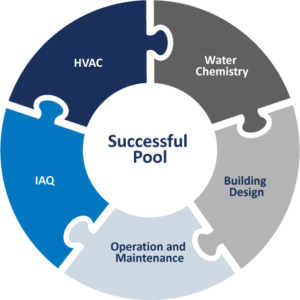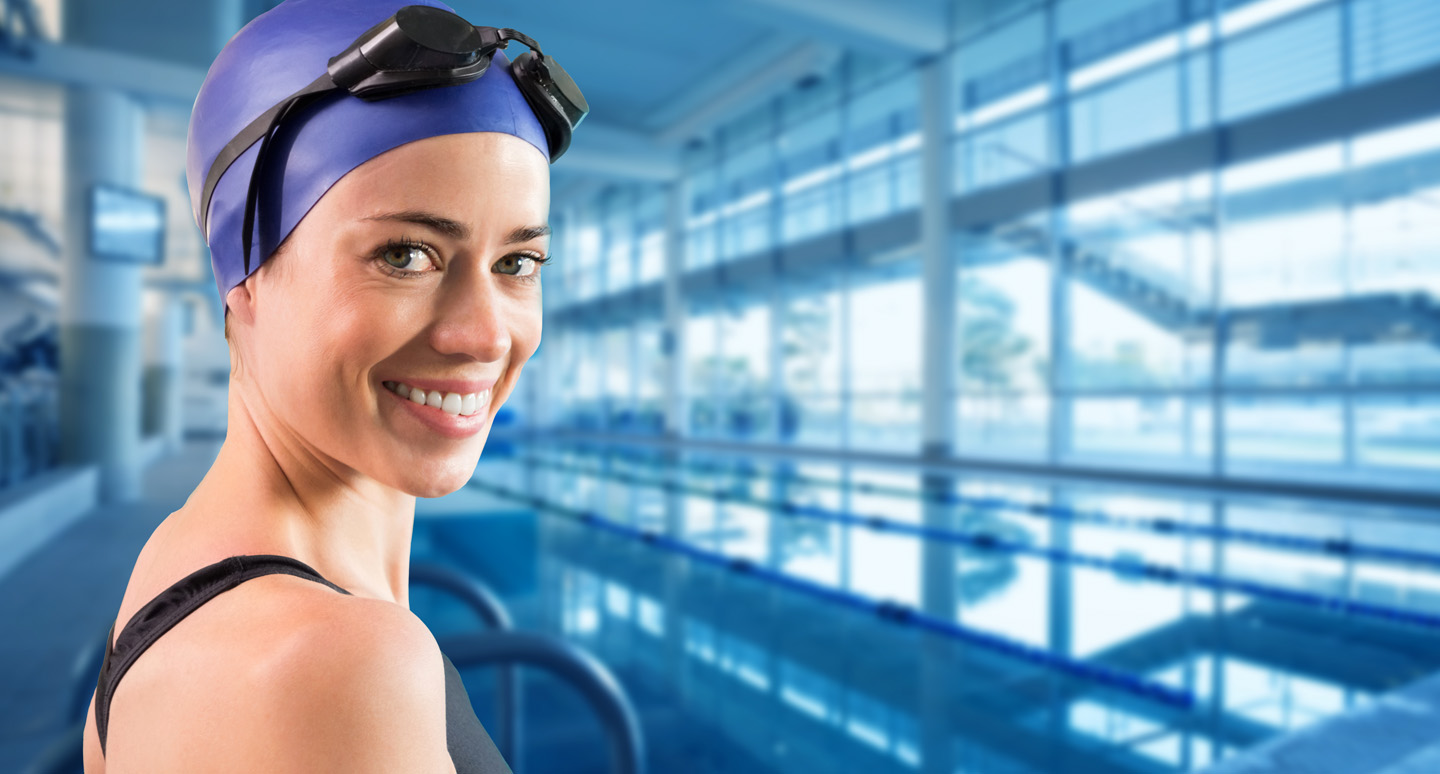Without proper humidity control, indoor pools can experience a range of issues including mold growth, structural damage, and discomfort for users. An effective indoor pool dehumidifier system is crucial to maintaining a comfortable and safe environment.
Controlling humidity in an indoor pool is a balancing act. All the elements of the indoor pool environment need to work together to maintain comfortable, healthy conditions. In successful pool facilities, everything from the chemical makeup of the water to the capacity of the HVAC system is purpose-built to keep humidity at bay.

Today, we’ll be focusing on the Indoor Air Quality (IAQ) and HVAC pieces of this puzzle, breaking down the components of an effective indoor pool dehumidification system and the function they serve.
Critical Components of Indoor Pool Dehumidification Systems
1. Dehumidifier Unit
The heart of any humidity control system is the dehumidifier unit itself. This device removes moisture from the air, maintaining an optimal humidity level. There are several types of dehumidifiers suitable for indoor pools:
Refrigerant Dehumidifiers: These use a refrigeration cycle to cool air, condense moisture, and then reheat the air before releasing it back into the environment.
Desiccant Dehumidifiers: These use a hygroscopic material (desiccant) to absorb moisture from the air. They are particularly effective in lower temperature environments.
Dilution Dehumidifiers: Dilution dehumidifiers draw large amounts of outside air towards the surface of the pool, diluting the chloramine layer so it’s harmlessly absorbed into the surrounding air.
2. Air Handling Unit (AHU)
An Air Handling Unit is essential for circulating and treating the air within the pool enclosure. The AHU works in tandem with the dehumidifier to:
Circulate Air: Ensuring even distribution of air and preventing pockets of high humidity.
Condition Air: Filtering and sometimes heating the air to maintain comfort levels.
Ventilate Air: Introducing fresh air to dilute indoor air contaminants and reduce the load on the dehumidifier.
3. Ductwork and Ventilation
Properly designed and installed ductwork is crucial for distributing conditioned air throughout the pool area. Key considerations include:
Material: Corrosion-resistant materials are preferred due to the high humidity and chlorine content in pool air.
Design: Adequate sizing and layout ensure even air distribution and prevent areas of stagnant air.
Vents and Diffusers: Strategically placed to optimize airflow and reduce condensation on surfaces like windows and walls.
4. Control System
An advanced control system allows for precise management of the indoor environment. There are several control methods available, but some of the most common are:
Humidistats: Devices that measure and regulate humidity levels.
Thermostats: Control temperature settings for both air and water.
User Interfaces: Allows pool owners to set desired humidity and temperature levels, monitor system performance, and receive alerts for maintenance needs.
5. Heat Recovery System
Given the energy-intensive nature of dehumidification, integrating a heat recovery system can improve efficiency. These systems capture and reuse heat generated during the dehumidification process to heat pool water and even warm the air. This recycles heat within the system, creating less of a load on other heating devices.
6. Condensation Management
Effective handling of the water extracted from the air is vital. Some technologies used to do this include:
Condensate Pumps: To remove collected water and prevent pooling or leaks.
Drainage Systems: Properly installed to direct condensate to a suitable drainage location.
7. Regular Maintenance and Monitoring
For the system to remain effective, regular maintenance and monitoring are crucial:
Filter Replacement: Ensuring air filters are clean to maintain air quality and system efficiency.
System Inspections: Regular checks for wear and tear, especially in ductwork and dehumidifier components.
Humidity Monitoring: Continuous or periodic checking to ensure humidity levels remain within the desired range (typically 50-60%).

